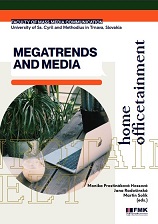Treasure Chest: How Micro-Headings Create Cognitive Frames (on the Example of the Educational Web-Site “Arzamas”)
Treasure Chest: How Micro-Headings Create Cognitive Frames (on the Example of the Educational Web-Site “Arzamas”)
Author(s): Arina MedvedevaSubject(s): Media studies, Higher Education , ICT Information and Communications Technologies, Sociology of Education
Published by: Univerzita sv. Cyrila a Metoda v Trnave, Fakulta masmediálnej komunikácie
Keywords: Arzamas; Educational Journalism; Educational Web-Site; Frames; Mediaesthetics; Micro-Headings; Theory of Machines;
Summary/Abstract: In the context of the functioning of an educational web-site, there is a need not only to create large courses, but also small-volume materials. This paper analyzes how the largest Russian educational web-site “Arzamas” uses micro-headings to create cognitive frames. For the analysis, we used the frame theory of M. Minsky, mediaesthetic approach and theory of machines by F. Guattari and G. Deleuze. Using one topic (like “Advertising of the Day” or “Smell of the Day”), “Arzamas” publishes a small thematic material every day for a certain period of time. Micro-heading consists of “cards”, each of which reflects a specific aspect of the topic. Thus, using the media format Arzamas forms a pattern of functioning of a certain phenomenon on the cognitive level.
Journal: Megatrendy a médiá
- Issue Year: 8/2021
- Issue No: 1
- Page Range: 287-296
- Page Count: 10
- Language: English

